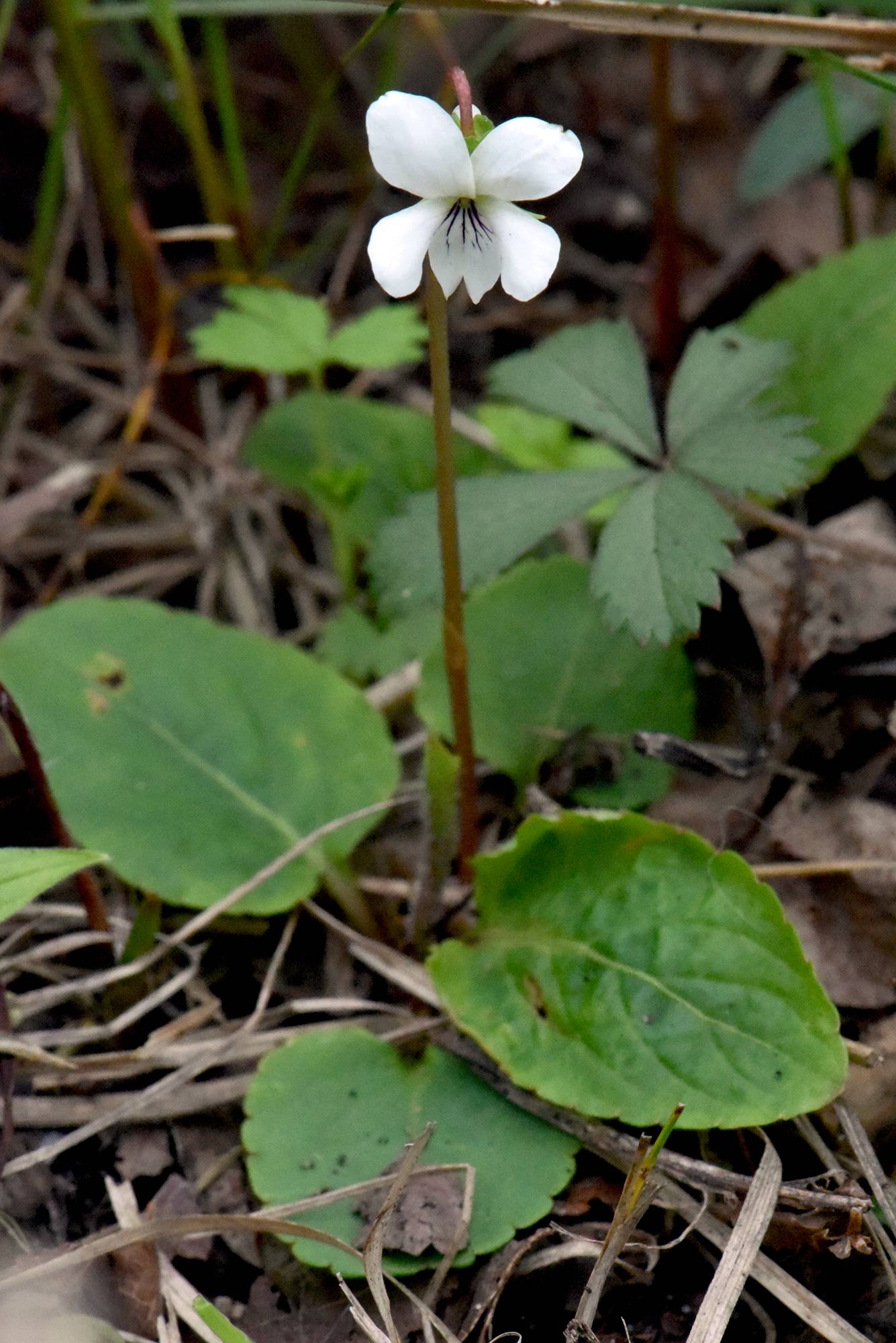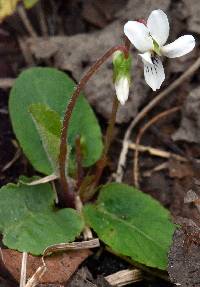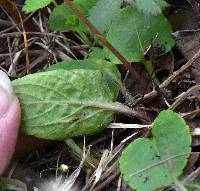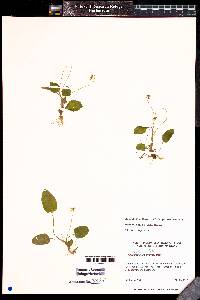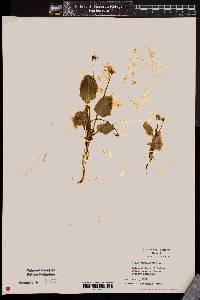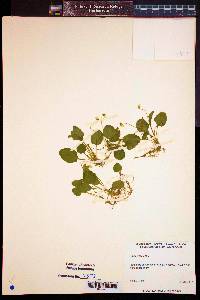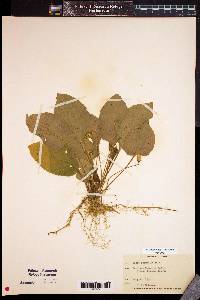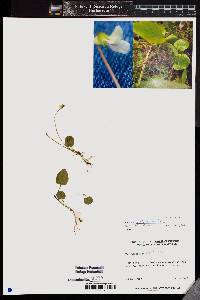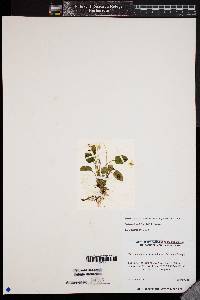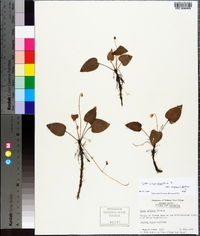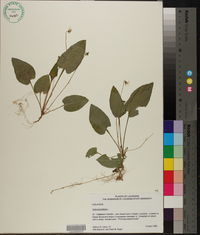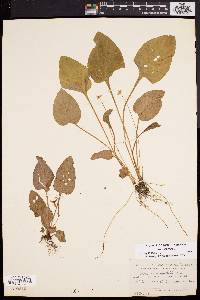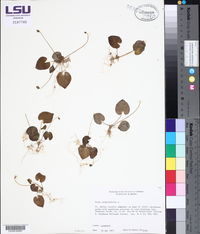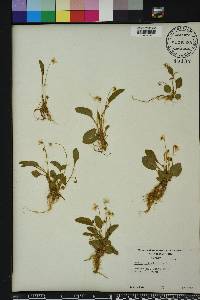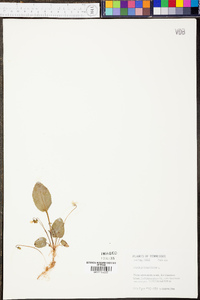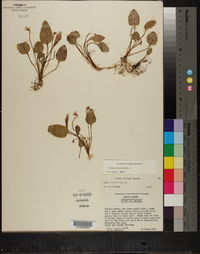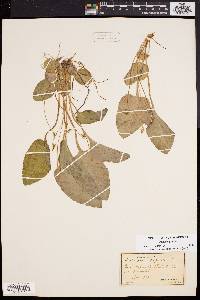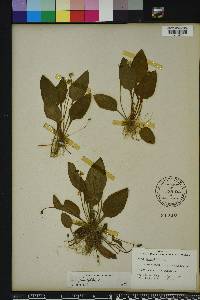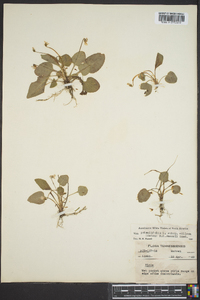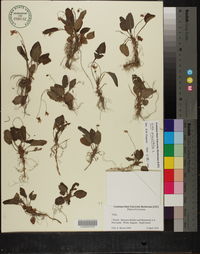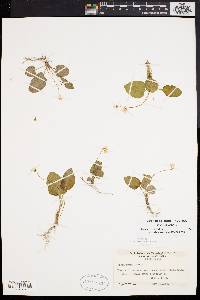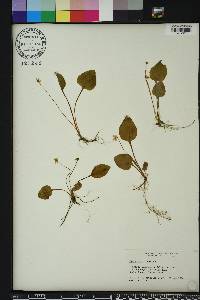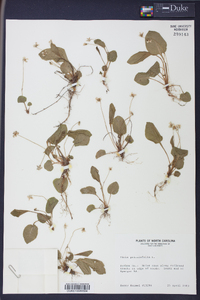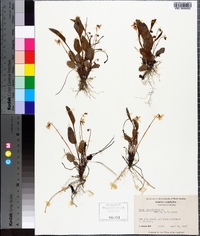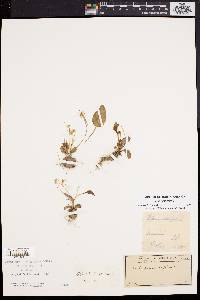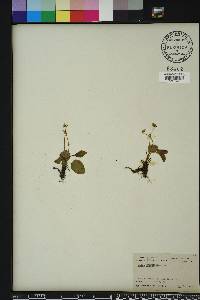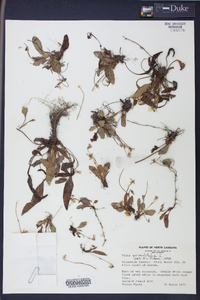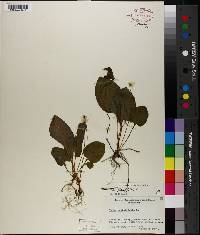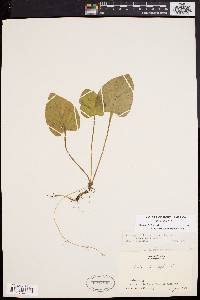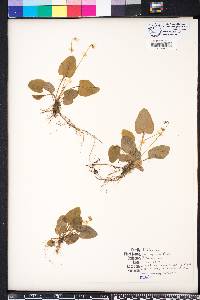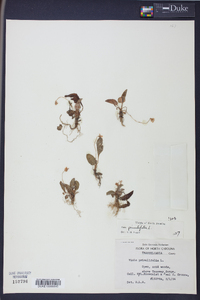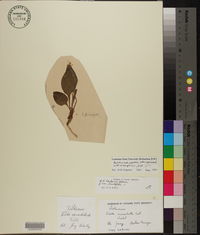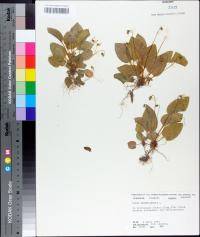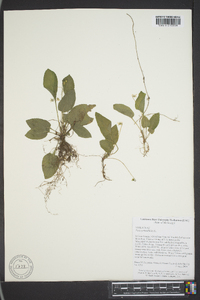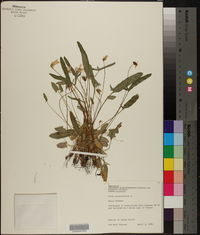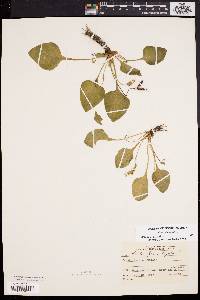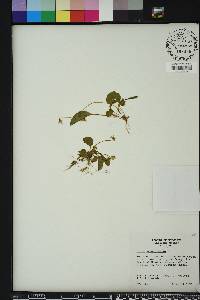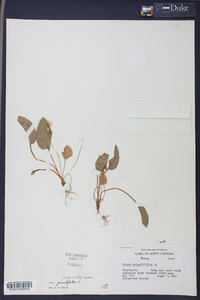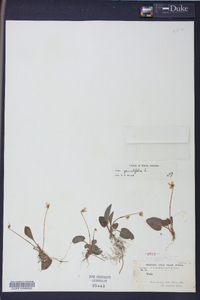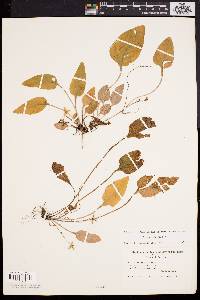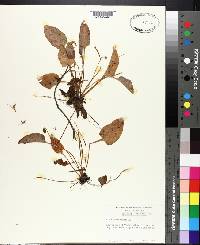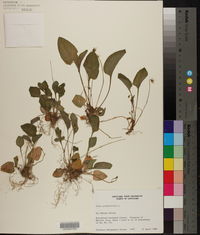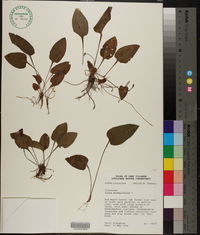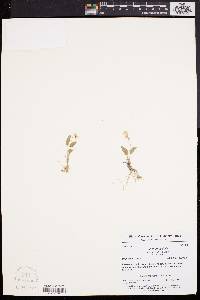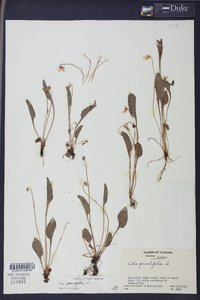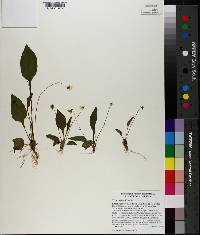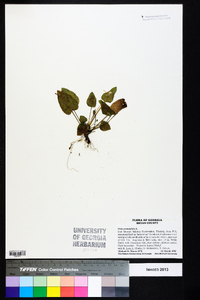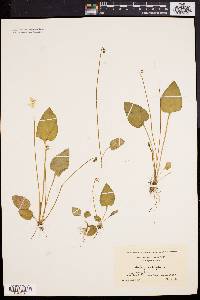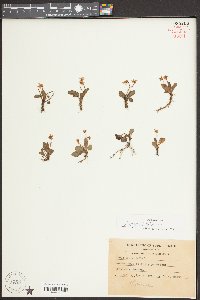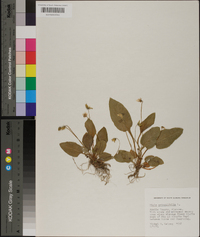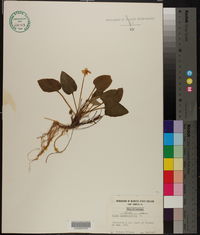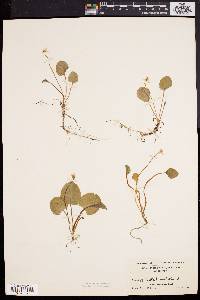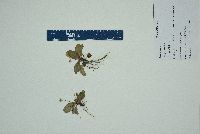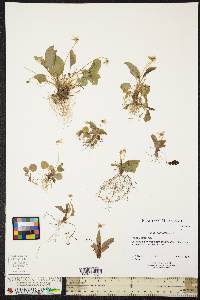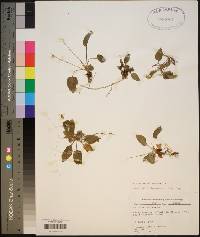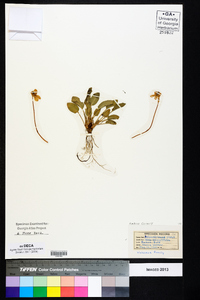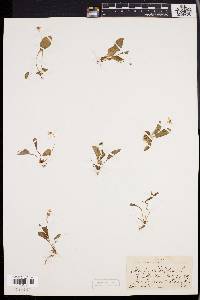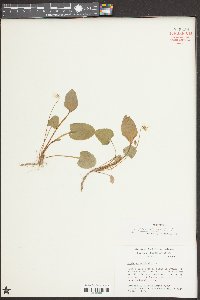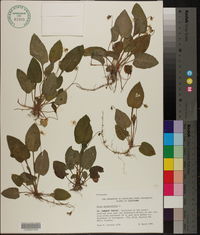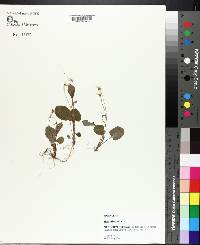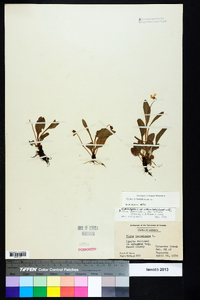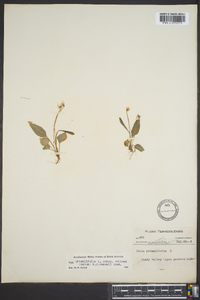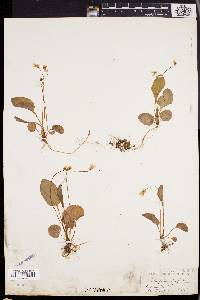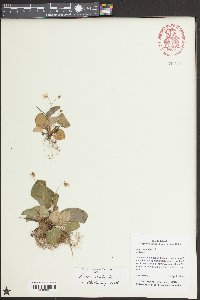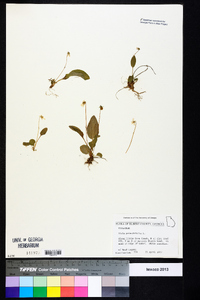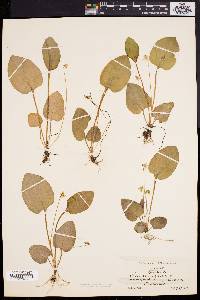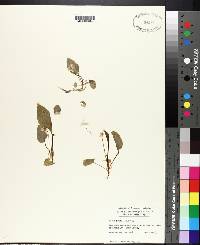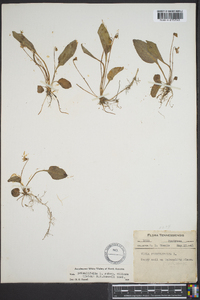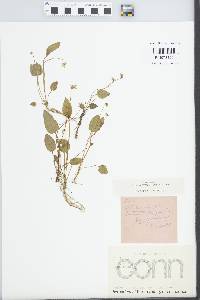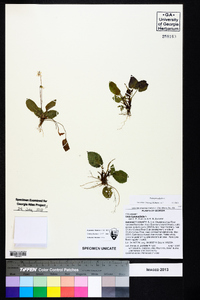
|
|
|
|
Family: Violaceae
primrose-leaved violet, more...Primroseleaf Violet
[Viola x primulifolia L. (pro sp.) [lanceolata × macloskeyi]] |
Perennial herb 2 - 25 cm tall Stem: absent aboveground, leaves and flowers arising independently and directly from a rootstock of slender (under 3 mm diameter) rhizomes and spreading by pale runners (stolons). Leaves: basal, long-stalked, finely round-toothed, hairy or hairless, 2.5 - 8 cm long, 1.7 - 8 cm wide (always longer than wide), narrowly elongate egg-shaped with broad wedge-shaped, flattened or almost heart-shaped base, and blunt or rounded tip. The leaf stalks are often winged at least above the middle, and the green stipules are usually more than 7 mm long. Flowers: long-stalked, white, about 1 cm long, bilaterally symmetric with two upper petals, two lateral petals, and lower petal with base modified into a rounded nectar spur. In the summer, producing short erect stalks terminated by very fertile flowers that do not open (cleistogamous). Sepals: five, green, lance-shaped with ear-like appendages (auricles) at the base. Petals: five, separate, all differently shaped, the lower three with brown-purple veins near base. The two lateral petals sometimes have a slight beard hairs near the base, while the hairless lowest petal is prolonged at its base into a short, rounded spur or sac. Stamens: five, separate, but very tightly arranged so anthers touch as they surround ovary. The filaments are very short, and the lower two stamens have spur-like nectaries on their backs that extend into the spur or sac of the lower petal. Pistil: with a single-chambered, superior ovary; and a single style that expands into a short, scoop-shaped stigma. Fruit: green (or flecked with some purple), hairless, 0.7 - 1 cm long, oblong to ellipsoid capsule opening lengthwise from top. The seeds are reddish brown to black, and have a large amount of oily endosperm, and often an appendage (aril). Similar species: Viola x primulifolia is most similar to its putative parents, V. lanceolata and V. macloskeyi ssp. pallens. The leaf shape of each parent distinguishes them from their hybrid. Viola lanceolata has more lance-shaped leaves with tapering, narrow wedge-shaped bases, and the petal bases are all hairless. Viola macloskeyi ssp. pallens has wider leaves that are more heart-shaped to kidney-shaped (less than one and a half times longer than wide), the leaf stalks are never winged, and the capsules tend to be shorter (only up to 0.6 cm). Flowering: May to September Habitat and ecology: Very rare, mostly in the eastern half of the Chicago Region, but also along the Kankakee River Valley; almost always in moist sandy soil such as along marsh borders, moist open meadows, or swamp borders. Occurence in the Chicago region: native Notes: This hybrid can be fertile (produce seeds and viable offspring) and has long been a source of confusion as to its origin and relationship to the eastern coastal plain taxon V. primulifolia (possibly also of hybrid origin). Some authorities have separated the northern and Great Lakes plants of this taxon from the eastern V. primulifolia and named it V. x sublanceolata (with parents V. lanceolata var. lanceolata and V. macloskeyi ssp. pallens). Here, we follow Ballard (1994) categorizing all plants, whether of self-regenerating coastal plain origin (traditional V. primulifolia in the strict sense) or new hybrid populations, to be named as the hybrid V. x primulifolia. Obviously much more study is required regarding the population dynamics and evolutionary history of the various populations in the range of the taxon (or taxa). Etymology: Viola is the classical name for the genus. Primulifolia means "having flowers like a primrose (Primula)". Author: The Field Museum Acaulescent, with slender creeping rhizomes, and producing leafy stolons after anthesis; lvs variously hairy or glabrous, oblong to ovate or obovate, finely crenate, obtuse or rounded at the tip, rounded to truncate or cuneate at base, mostly 1.5-2.5 times as long as wide; peduncles shorter to longer than the lvs; pet white, the 3 lower with brown-purple veins near the base, the 2 lateral ones beardless or slightly bearded; cleistogamous fls on short, erect peduncles; frs oblong-ellipsoid, 7-10 mm; seeds reddish-brown to black; 2n=24. Moist, open meadows and stream-banks, especially in sandy soil; N.B. to Fla., w. to Ind., Tenn., Okla., and Tex., more common eastward. Apr.-June. Gleason, Henry A. & Cronquist, Arthur J. 1991. Manual of vascular plants of northeastern United States and adjacent Canada. lxxv + 910 pp. ©The New York Botanical Garden. All rights reserved. Used by permission. |
|
|
|

